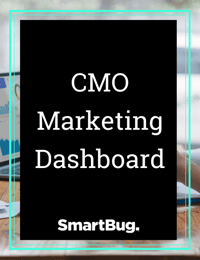
Crafting Impactful Private Equity Performance Metrics
January 25, 2024
How do you feel when you’re preparing your board report for an upcoming meeting? SmartBug’s Tonia Speir asked this question to kick off the “Decoding Private Equity: Crafting Impactful Reports & Performance Metrics” webinar. Whether you’re a tenured CEO or it’s your first time at the table, preparing for a board meeting can be stressful.
In this webinar recap, we—along with private equity (PE) partners Brad Hiller of Frontier Growth and Anne Gherini of Sierra Ventures—explore how to create private equity performance metrics and reports that investors want to see.
Start with Your Pipeline
Doubtlessly, what’s important to one board might be completely different than another. Your specific goals and your leaders’ priorities should drive what you include in reports and presentations. However, Hiller and Gherini were clear on one thing that matters regardless of your industry or funding: the pipeline.
A well-defined pipeline that every stakeholder and team understands will make all the difference in developing relevant key performance indicators (KPIs) and goals. Some key questions and considerations to help your organization begin outlining your pipeline include:
- Who are your customers?
- Where are your prospects?
- What is your ideal customer profile (ICP)?
- When is an ICP or prospect interested in hearing more from people in your industry? (i.e., when are they an MQL?)
- When is an ICP or prospect interested in hearing more from you in particular? (i.e., when are they an SQL?)
With those questions answered, you should be able to better lay out your marketing funnel and then move to the more hard-hitting tactical questions.
The panel mentioned the questions below as examples of the things boards and venture capitalists (VCs) hope to see most clearly:
- What is the nurture gap between MQL and SQL?
- What activities and tactics drive your pipeline?
- What repeatable processes do you already have in place as a marketing engine?
- What additional repeatable processes would you be able to roll out?
The panel clarified that there are still things in between, for instance, specific sales and sales team performance metrics—but at the end of the day, this is what a board needs to know to help make a strategic partnership work.
Key Metrics PE Investors Want to See
A clear pipeline can be helpful when establishing key performance metrics. The panel identified these KPIs as the best way to explain a company's story:
- Forecast accuracy (what you said you’d sell versus actual sales)
- Close rate versus planned close rate
- Sales cycle versus benchmark
- Average selling price (ASP) versus benchmark
- Top of funnel: MQL to pipeline conversion rates versus planned
- Pipeline benchmark broken down by stage—how many units, how much average recurring revenue (ARR) in a sales cycle (e.g., 90 days)
Those KPIs lend themselves well to specific pipeline performance metrics that give clarity to unit versus ARR:
- Conversion rates at every stage to get you to closed won
- ASP
- Time and cycle (this is harder for early-stage companies, but they can build a benchmark based on the industry and market)
- Sales velocity
- Percentage of opportunities to close
- ARR you should have at a given time to provide the right coverage
Things to Keep in Mind When Building Reports
The way you present your data is just as important as the data itself. Your board is made up of smart but busy humans, so keep the following in mind when developing your board meeting decks, dashboards, and reports.
- Keep it concise: This isn’t show-and-tell. More isn’t better; better is better. Your board doesn’t necessarily need to know about all the KPIs you manage daily, weekly, or even monthly.
- There shouldn’t be any surprises for your board members: Deliver slides ahead of time so they can digest the information. This will ensure you get the best use of your time in deep-diving and problem-solving.
- Vanity metrics are easy to see through: Boards want to see little wins, but it might make more sense to share “nice to haves” in follow-up documents than to highlight them during a meeting.
- Leads aren’t everything: Speaking of vanity metrics ... leads are important, but they can become distractions when they take the entire focus. Be proud of and transparent about what you’re driving in the middle of the funnel because this is what contributes to revenue.
How Do You Get the Most Out of Your Partnership?
Establishing performance metrics and setting goals are big parts of board meeting agendas, but working with a board should be more about partnership than data reports. Our experts emphasized that even though these meetings may seem challenging, your board is ultimately on your side. They want you to succeed because it is their success, too.
Practice candor when you don't achieve a goal or a project doesn't perform well. “They’re smart and know when you’re not being transparent,” reiterated Hiller. And it’s not just about transparency; if you share the good, the bad, and the ugly, the board can work with you on solutions.
With that in mind, come prepared with ideas on how to address missed goals or the steps you’ve already taken to work toward improvement. Additionally, prepare for tough conversations and be open to being vulnerable, because there is no way to completely avoid difficult times or lackluster results.
To hear even more insights from the experts, watch the full on-demand webinar.
About the author
Marissa Litty-McGill was formerly a HubSpot Technologist and Certified HubSpot Trainer with 10+ years of marketing experience spaning both B2B and B2C industries. Though she received her Communications degree in Journalism & PR/Advertising, she fell for marketing before walking across the University of Nebraska at Omaha's graduation stage. You can find her cross-stitching, gaming or exploring the world with her husband and dog when she isn't geeking out over inbound and databases. Read more articles by Marissa Litty-McGill.









